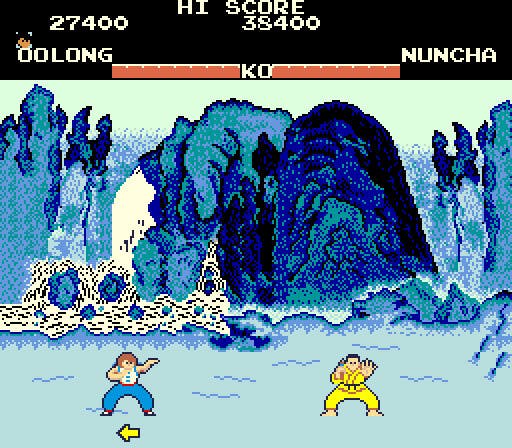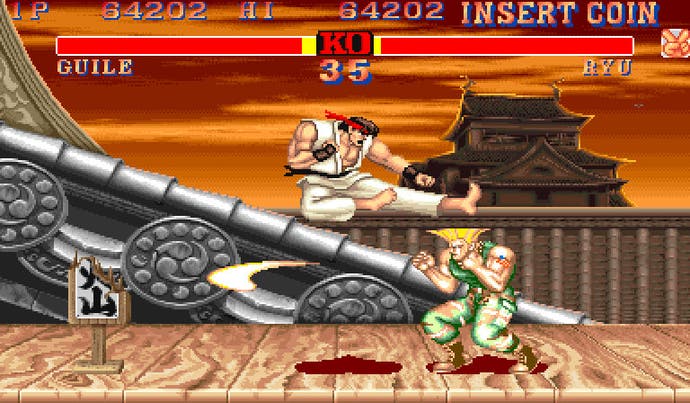Beginner's Guide: Fighting Games
The ultimate combo ice breaker.
In theory, fighting games should be one of the easiest genres to define - it's pretty much all there in the title. Two people trade karate chops, dragon punches and flying kicks until one is knocked unconscious or mercilessly killed, the only real complication coming from the clicking timer (fighters tend to suffer a cardiac arrest if they break the 60 second rule, you see.)
Except, it's not always one-on-one, as Marvel vs. Capcom lets you tag your characters in and out like professional wrestlers. Sometimes it's not just about feet and fists, as Soulcalibur furnishes its fighters with short swords and gigantic claymores.
There's even a distinction between how 2D and 3D fighting games operate, and once you factor in advanced terminology like super cancelling, zoning, turtling, juggling, parrying, tick-throwing and wave-dashing, it's clear that the fighting genre is one of the more complex around.
And fighting games mean different things to different people. Daishi Odashima, Director of Soulcalibur V, sees them as an advanced form of chess. "I think fighting games are like puzzles. You have some alternative actions and moves in every circumstance, and players need to find them. When I play fighting games seriously, I sometimes examine several moves like when playing Shogi. If you understand the rules of fighting games, they are almost the same as card games, but with a shorter time limit."

But Paulo Garcia, Lead Designer on Mortal Kombat, has a different take, seeing fighting games as more akin to competitive sports. "Part of what makes sports so much fun to watch is their ability to showcase not only the skill of the players, but the unpredictability of humans," he says, "Fighting games, more than any other game, capture this feeling in digital form. There are only so many ways that two boxers can swing their fists at each other, but the journey to that final knockout is never the same."
In this sense, fighting games are about reading your opponent and searching for an opening - just like in a real-life sparring match. For Katsuhiro Harada, Producer of Tekken 6, it's about much more than that, and he sees fighting games as something altogether more philosophical. "You channel your intelligence, your philosophy, your pride and your discipline into your character, then face an adversary to prove and express yourself. The fighting game means endless battling and a way of life."
This is an impassioned take on what the genre means to hardcore players. But in the hands of a casual audience, fighting games can be enjoyed with frenzied button mashing - in much the same way you don't need a car license to enjoy the delights of Forza 3.
A Brief History
The seventies saw a surge of interest in martial arts cinema, with 1971's The Big Boss and 1974's The Street Fighter hitting big. Video games, unsurprisingly, weren't going to miss a trick, and in 1976 - the same year a generation fell in love with Rocky Balboa - Sega released Heavyweight Champ.
It featured a boxing glove that could tilt up and down to perform high and low punches, and while its side on perspective is reminiscent of modern fighting games, it was far from a pioneer. Tim Skelly's vector-based 1979 game Warrior is more fondly remembered, and with its top down perspective featuring two battling knights it can lay claim to being the first weapons-based fighting game.
But the true grandfather of fighting games is none other than 1984's Karate Champ. Known in Japan as Way of the Empty Hand, this arcade game introduced the "best of three rounds" format alongside a varied move set. It also had a bonus stage where you punched a charging bull in the face.

Following Karate Champ was Yie Ar Kung Fu (1985). This Konami classic introduced characters with different fighting styles, health bars, female fighters as well as projectile attack - and it also featured a digitised voice that yelled "perfect" when you won a match without a scratch.
Then in 1987, Capcom released the original Street Fighter, a game that introduced the wandering Ryu and let players discover his fireball, dragon punch and hurricane kick techniques - all performed with circular motions of the joystick. Street Fighter was also the first fighting game to use a six-button layout split between punches and kicks. It was mildly innovative, but the best was yet to come.
In 1991 Capcom defined a genre with what is arguably the most important fighting game of all time. Street Fighter II: The World Warrior let you choose between eight different characters - each with their own special moves. It also pioneered the "combo" system that became synonymous with both the series and the genre.
"Street Fighter II had a big influence on my life", Namco's Harada enthuses, "I hold my arcade pad like I hold a wine glass. It's a strange way to hold a pad, but I played Street Fighter II so much that I bruised my left hand and it got covered in blisters. I still have the scar even today."
Street Fighter II's success kicked off a golden spell for the genre, spawning the likes of SNK's Fatal Fury: King of Fighters (1991) and Midway's Mortal Kombat (1992). Fatal Fury was released less than a year after Street Fighter II and introduced the Bogard brothers as well as an intriguing background/foreground switching system. Mortal Kombat, meanwhile, became Street Fighter's first true rival and sent the media into a frenzied hysteria thanks to its rushes of pixelated gore.

